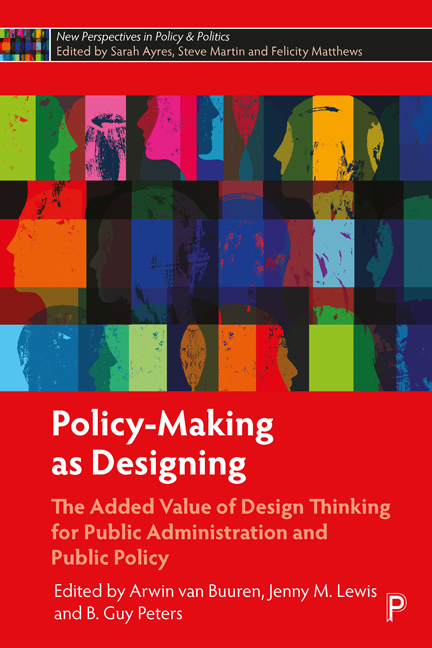 Policy-Making as Designing
Policy-Making as Designing Book contents
- Frontmatter
- Contents
- List of figures and tables
- Notes on contributors
- 1 Improving public policy and administration: exploring the potential of design
- 2 Applying design in public administration: a literature review to explore the state of the art
- 3 Challenges in applying design thinking to public policy: dealing with the varieties of policy formulation and their vicissitudes
- 4 Designing environments for experimentation, learning and innovation in public policy and governance
- 5 Policy Labs: the next frontier of policy design and evaluation?
- 6 When design meets power: design thinking, public sector innovation and the politics of policy-making
- 7 Designing institutions for designing policy
- 8 Applying design science in public policy and administration research
- 9 Using a design approach to create collaborative governance
- 10 Policy-making as designing: taking stock and looking forward
- Index
2 - Applying design in public administration: a literature review to explore the state of the art
Published online by Cambridge University Press: 20 January 2024
- Frontmatter
- Contents
- List of figures and tables
- Notes on contributors
- 1 Improving public policy and administration: exploring the potential of design
- 2 Applying design in public administration: a literature review to explore the state of the art
- 3 Challenges in applying design thinking to public policy: dealing with the varieties of policy formulation and their vicissitudes
- 4 Designing environments for experimentation, learning and innovation in public policy and governance
- 5 Policy Labs: the next frontier of policy design and evaluation?
- 6 When design meets power: design thinking, public sector innovation and the politics of policy-making
- 7 Designing institutions for designing policy
- 8 Applying design science in public policy and administration research
- 9 Using a design approach to create collaborative governance
- 10 Policy-making as designing: taking stock and looking forward
- Index
Summary
Introduction
Public sector organisations face many intractable issues, such as climate change, migration and integration, chronic diseases, aging and inequality. These issues touch upon different interests and values and are surrounded with uncertainty and controversy. Furthermore, governments also face financial pressures, urging them to come up with cost-efficient solutions. Citizens, simultaneously, expect governments to develop policies and services that fit their needs without causing excessive bureaucracy or unwanted inequalities (Kimbell, 2016; Bason, 2017). As a result, the problems governments are dealing with have become increasingly complex, and so have the solutions – policies and services – they develop: they have become increasingly integrated, spanning across levels of public administration and involving different actors (Chindarkar et al, 2017). As a result, governments are confronted with a significant design challenge: how to deal with ‘wicked problems’ (Rittel and Webber, 1973) in such a way that effective and efficient policies and services result, which are perceived as legitimate.
Design is advocated as a promising development in public administration for various reasons. Design processes are supposed to result in feasible and reliable policies, services and interventions, while addressing complex or even wicked social problems. They are said to foster creativity and develop innovation capabilities, by helping participants to imagine alternative solutions and features. In addition, design is supposed to help integrate insights from different fields, sources or actors, thus increasing the chances of a successful implementation of a policy that meets the needs of users. Designed policies and services are potentially more responsive to the needs of those who work with them (Steen, 2011; Bailey and Lloyd, 2016; Chindarkar et al, 2017; Blomkamp, 2018).
The question how scholars in public administration can contribute to this challenge and enhance the design capacities of public governments is far from new within the field. At the first Minnowbrook Conference (1968), Herbert Simon held a set of lectures on artificial or design sciences. These sciences focus on the artificial – the manmade – as opposed to the natural sciences. Artificial sciences therefore incorporate design, which is ‘concerned with how things ought to be, with devising artefacts to attain goals’ (Simon, 1969: 133).
- Type
- Chapter
- Information
- Policy-Making as DesigningThe Added Value of Design Thinking for Public Administration and Public Policy, pp. 18 - 50Publisher: Bristol University PressPrint publication year: 2023


